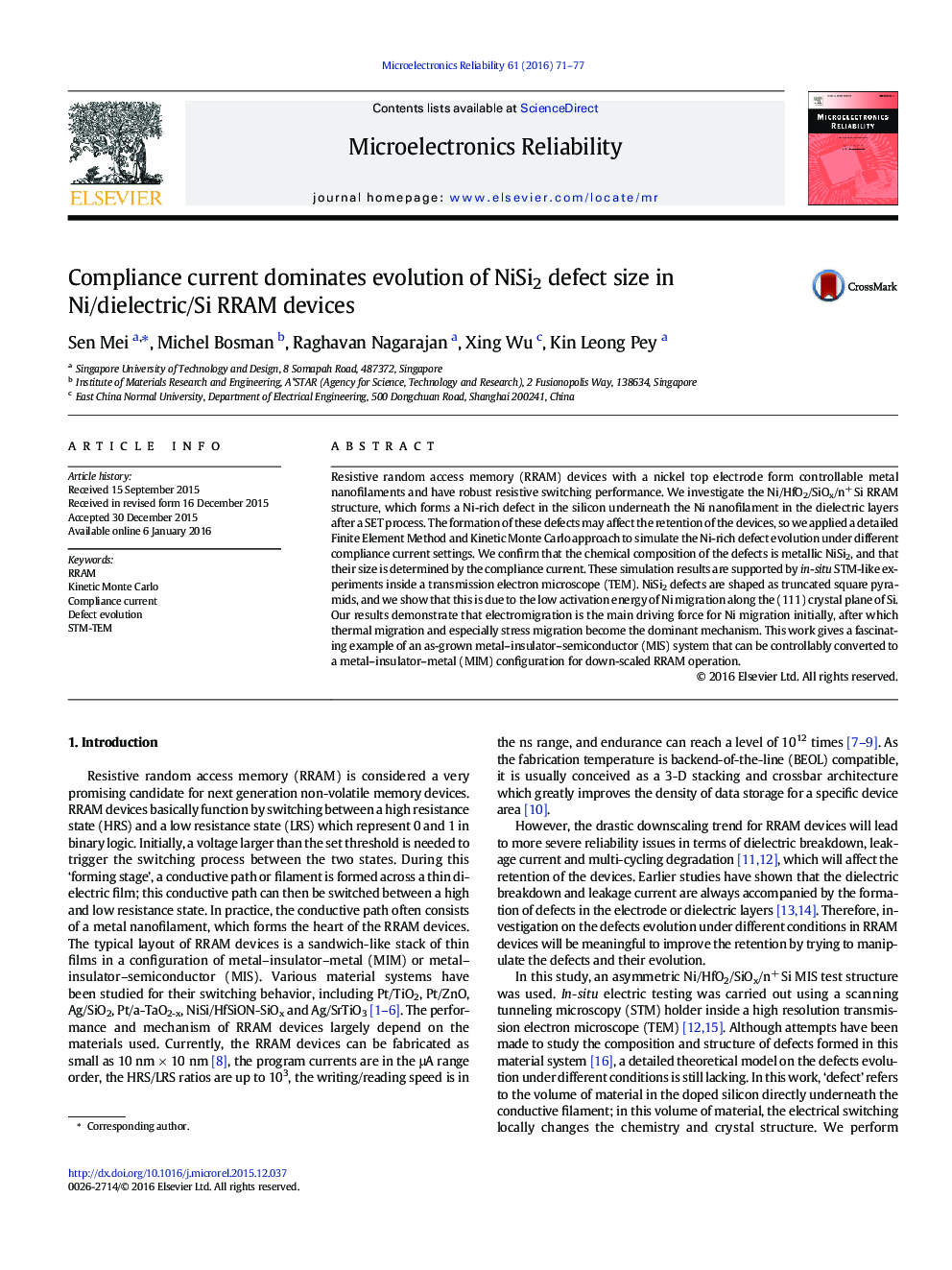| کد مقاله | کد نشریه | سال انتشار | مقاله انگلیسی | نسخه تمام متن |
|---|---|---|---|---|
| 544613 | 1450539 | 2016 | 7 صفحه PDF | دانلود رایگان |

• Finite Element Method and Kinetic Monte Carlo approach was applied to simulate the Ni-rich defect evolution under different compliance currents.
• The formation of NiSi2 defects is due to the low activation energy of Ni migration along the (111) plane of Si.
• Electromigration is main driving force for Ni migration initially, then thermal migration and especially stress migration become the dominant mechanism.
Resistive random access memory (RRAM) devices with a nickel top electrode form controllable metal nanofilaments and have robust resistive switching performance. We investigate the Ni/HfO2/SiOx/n+ Si RRAM structure, which forms a Ni-rich defect in the silicon underneath the Ni nanofilament in the dielectric layers after a SET process. The formation of these defects may affect the retention of the devices, so we applied a detailed Finite Element Method and Kinetic Monte Carlo approach to simulate the Ni-rich defect evolution under different compliance current settings. We confirm that the chemical composition of the defects is metallic NiSi2, and that their size is determined by the compliance current. These simulation results are supported by in-situ STM-like experiments inside a transmission electron microscope (TEM). NiSi2 defects are shaped as truncated square pyramids, and we show that this is due to the low activation energy of Ni migration along the (111) crystal plane of Si. Our results demonstrate that electromigration is the main driving force for Ni migration initially, after which thermal migration and especially stress migration become the dominant mechanism. This work gives a fascinating example of an as-grown metal–insulator–semiconductor (MIS) system that can be controllably converted to a metal–insulator–metal (MIM) configuration for down-scaled RRAM operation.
Journal: Microelectronics Reliability - Volume 61, June 2016, Pages 71–77